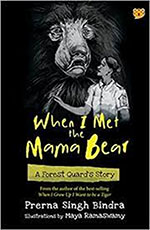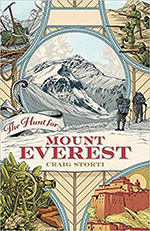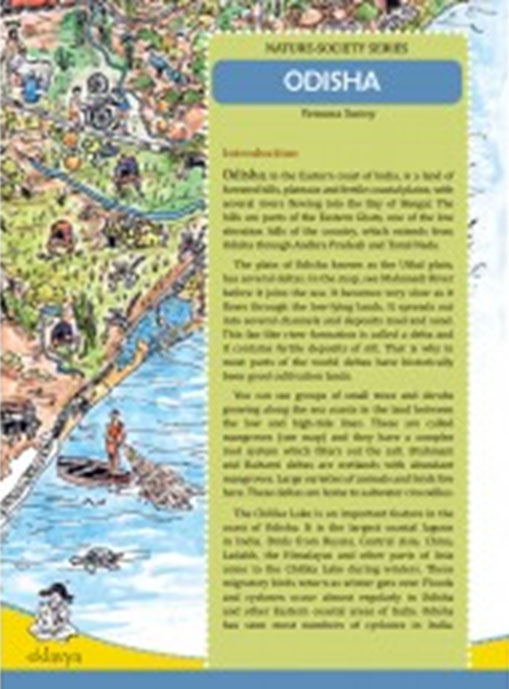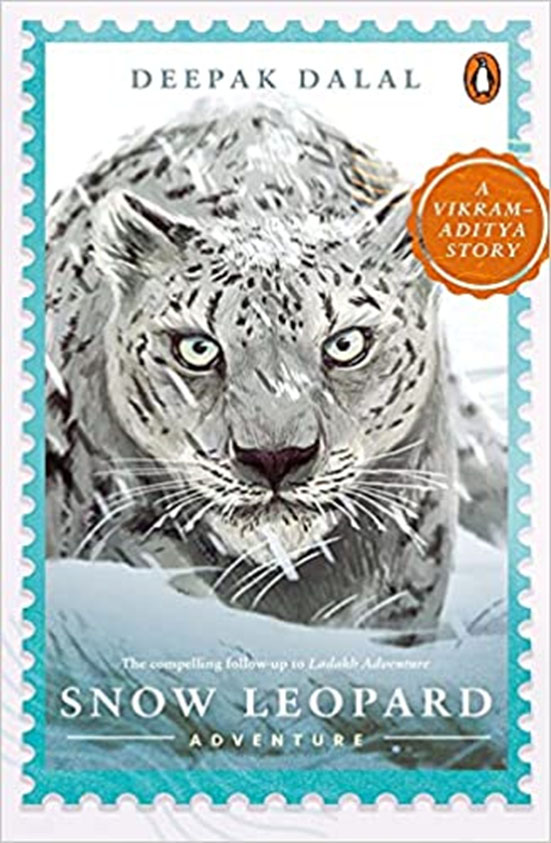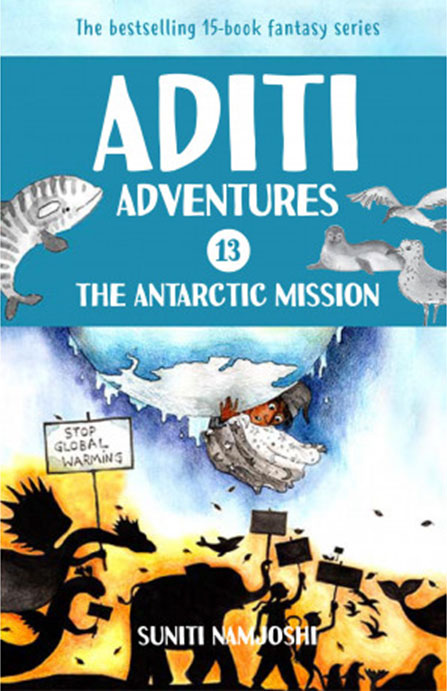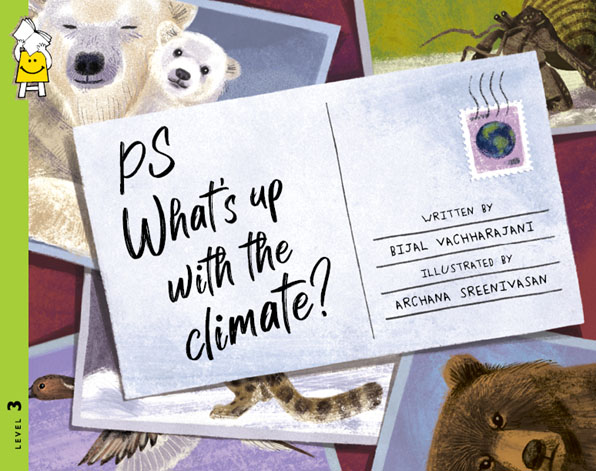Environment
Nagaraj Adve’s Global Warming in India is a brief and practical guide that enables the reader to engage with the discussions, debates and actions about the most pressing social and moral issue before our generation. It is written with a sense of hope and compassion for the ‘ordinary people’ that is largely missing in similar and popular books, which tend to focus more on the specialist and technocratic solutions handed over from above and to which most of us are expected to assent to and participate merely as a consumer or observer.
Picking up the book—the name made me wonder how an elephant in Rajaji National Park, far removed from the southern kingdom of Mysore got the name Tipu, fondly called Sultan of the Siwaliks. Amirtharaj Christy Williams’ memoir has the answer, and more! Elephant naming anecdotes abound.An insightful Foreword by Prerna Singh Bindra, India’s leading environmental journalist, tells how Williams makes a case for the Asian elephants, remarkable animals fighting a losing battle as forests get rapidly cleared for human use.
Have you ever wondered why we feel scared or become very excited when we hear about forests? Being born and brought up in metropolitan cities like Delhi, most of my understanding about forests comes from school books and they have usually portrayed forests as dangerous places.
Karthika Lakshmi’s So Shall You Reap was one of two prize winning entries in CBT’s Realistic Fiction category in the 20th Competition for Writers of Children’s Books organized in 2019. The story is about an expedition by students from across India to deposit seed samples in the Svalbard Global Seed Vault, with narrative conflict introduced through ‘vested interests’ who seek to replace the indigenous seed varieties with genetically modified ones.
Our Wiggly Friends, Earthworms is a small book of 32 pages. The book can be divided into two major parts; the first and the main part of the book provides various details about earthworms while the second part focuses on the role that earthworms play for soil, and introduces the readers to vermiculture (artificial rearing of earthworms).
In our country, there are many huge multipurpose hydroelectricity (hydel) projects. These projects involve construction of dams, resulting in huge swathes of waterbodies called backwaters. These backwaters are not just used for electricity generation but are also a direct source for agricultural irrigation, industrial water supply, freshwater pisciculture and drinking purposes. Additionally, these can contribute indirectly to GDP as they can be turned into sites of tourist attraction.
India is a country blessed with rich biodiversity. It also is a nation developing at a great pace, locking horns with many other powerful global economies. But we need to keep in mind that development too, comes at a price. If development is not holistic and just anthropocentric, it doesn’t take long for the environment to collapse on itself. Unfortunately, most of the world is facing these after-effects of anthropocentric development.
We are not alone in this world. We are surrounded by different kinds of living beings and trees and plants. There is no place near or far from us where these living beings do not exist. A dark corner of the house, a wall, even the bark of trees, are home to many living things. And not only bark, even the leaves of trees are home to many different kinds of life-forms. There are eggs stuck on somewhere, and at other places you have caterpillars chomping on them!
2022
This booklet about Karnataka comes as a new addition to the ongoing Nature-Society Series authored by Yemuna Sunny, which finds ways to think in innovative and imaginative ways about maps. With its striking sketch map and detailed artwork by Trripurari Singh, the book engages with socio-spatial transformations and seeks to converge ‘cartography and art, nature and society, information and criticality, map and text, and knowledge and change’ in the words of the author.
This slim book packs a lot of interesting information facts and figures about Andaman and Nicobar, Union Territory of India. Located in the Bay of Bengal with close proximity to Indonesia and Myanmar, these 572 islands (of which only 36 are inhabited) are very strategic for India’s maritime interest. The relatively untouched beauty of the islands are increasingly facing the twin threats of growing commercialization and large infrastructure projects
Amitav Ghosh’s The Nutmeg’s Curse is a work of post-genre literature. It is at once story, scholarly treatise, history, anthropology, folklore, memoir, diary, manifesto, and prose poetry. To call it a text would be unfair, for its very polemical and philosophical axis is agency. Moreover, it has been crafted with that rare artistry which, concealing itself as spontaneity, confers on the work a complex organic wholeness.
In this 75th year of the existence of India as an independent state, the month of May brought on a cruel heatwave. Indians are accustomed to the difficult life, and heat has been, for large swathes of the country, a permanent fixture on the list of cruelties. Yet, no matter what methods we have devised to stave it off, the experience simply worsens by the year because of human induced climate change, and all methods fail to give respite.
This book analyses the impact of climate change in South Asia and its environmental and socio-economic fallouts. It looks at climate change in the region from an interdisciplinary perspective and recommends some policy measures for addressing climate change. The title of the book is interesting and suggests how South Asia is the most vulnerable region of the world to climate change.
Craig Storti’s ambitious book is a unique addition to the sagging shelves of literature on the world’s most famous mountain. Where most Everest books begin with the exploratory expedition to the peak in 1921, Storti’s story spans the seven or so decades before that pioneering venture.Mountaineering lore holds that Radhanath Sickdhar (sic), a ‘computor’—as number-crunchers were known in those days—working for the Great Trigonometrical Survey of India, burst into the room of his boss one day in 1852 exclaiming: ‘Sir, I have discovered the highest mountain in the world.’ What was visible from Darjeeling as a mere smudge on the mountainous horizon was now ‘the third Pole’.
Our understanding of climate change has not advanced after the recent climate negotiations, the CoP26, November 2021 in Glasgow. Climate change, being the most complex and lasting of the series of environmental challenges that humanity and the planet have faced over the past two and half centuries, has no easy solution.
Maps are very important tools of education. What is a map?The old idea of maps focuses on its utility, to locate places and determine directions. Political history has widened this core utility to include in it a powerful socializing devise, to create territorial nation states in the young minds. Education submits to the mysterious power of the boundaries that maps display. Borders tend to make the earth less important than the inhabitants of each society and nation. Nature’s crisis and the state of tension between human relations, and nature and human relation with other humans become unreceptive to education, including the best kind of education…
Through the two Vikram-Aditya stories, Deepak Dalal showed me a glimpse of the beauty of Snow Leopards of the Himalayas and the coral reefs near south Indian Islands. Vikram and Aditya are two adolescent friends, who find themselves in adventures dealing with men involved in illegal work during their trips away from their school in the Nilgiris. The travel adventure does more than just telling suspenseful tales. Though the books are committed to a nail-biting plot to hand over the criminal mastermind and bring them to justice, in doing so the author makes use of descriptions of the locations that takes the reader through the geography of the places…
The Antarctic Mission is the 13th book in the series Aditi Adventures by the well known feminist, fabulist and writer Suniti Namjoshi. Aditi is a young girl (inspired by Namjoshi’s niece—her namesake) who sets out on the most amazing adventures across the world along with her three companions: a monkey, an ant, an elephant named Beautiful and sundry dragons. Originally published as a twelve book series dealing with diverse themes, the stories blend adventure and fantasy, the tech savvy world of today and the magical…
We live in a world that is messy and complicated. Technology has escalated it. Are children untouched by it? Hardly. Their sense of good and bad, right and wrong are no longer simple. Ask a child if good begets good, and in all probability you will hear a ‘no’! How Earth Got its Beauty by Sudha Murty for children is a story that is from another time—innocent and uncomplicated…
Climatic change has become a global concern over the last few decades. It refers to the change in the environmental conditions of the earth. This happens due to many internal and external factors. Isn’t it interesting that knowingly or unknowingly we observe various things such as trees, vehicles, garbage and so much more? What are all these things? They’re nothing but a part of our environment. Bijal Vachharajani discusses climate through a series of letters from the animal kingdom and has interestingly and skilfully entwined two valuable learnings…



